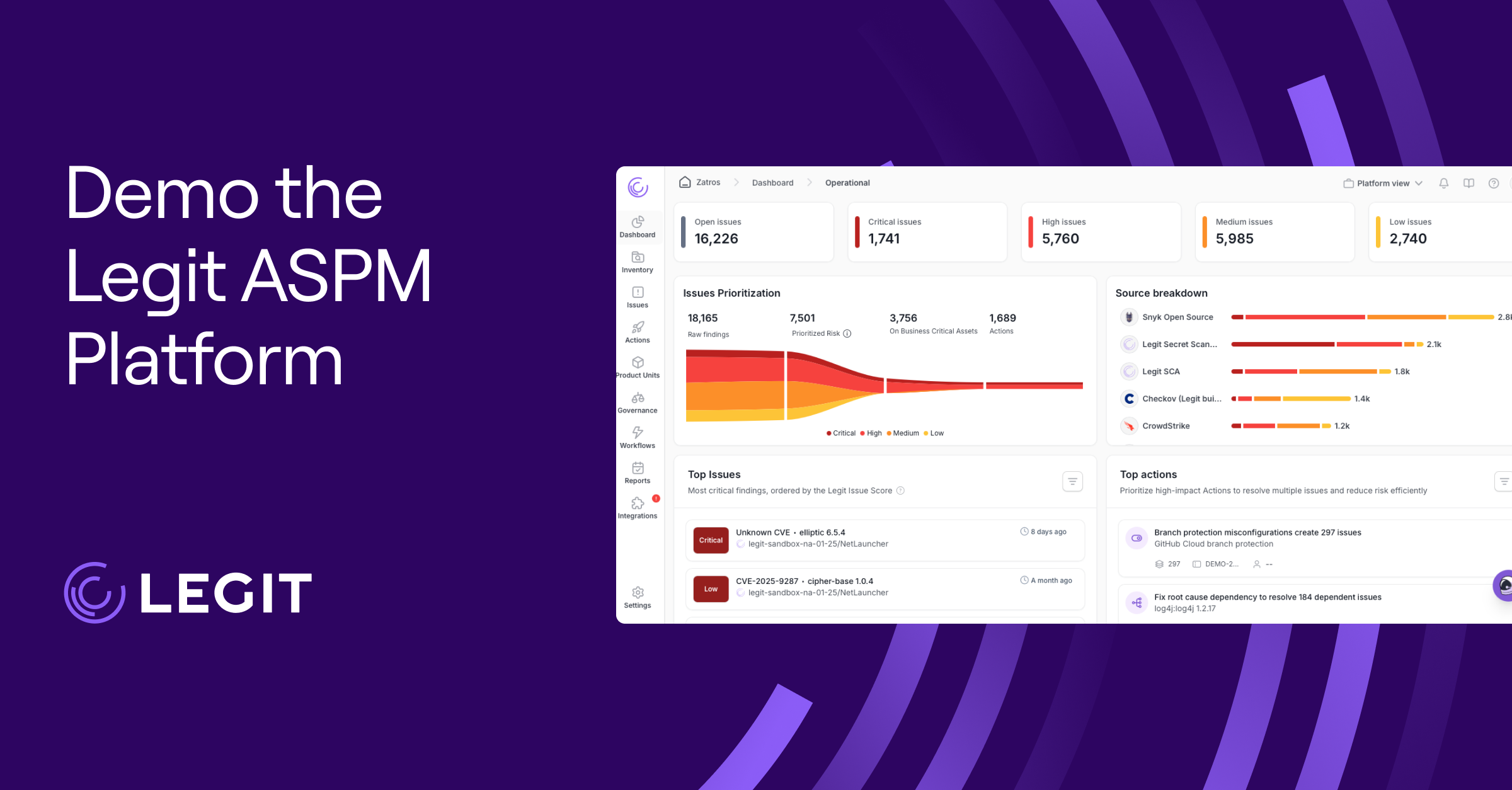Cloud infrastructure is now the backbone of modern business. From storing customer data to running mission-critical applications, more organizations are shifting workloads to the cloud for its speed, scalability, and cost benefits. That shift isn’t slowing down anytime soon, according to McKinsey—cloud adoption could generate $3 trillion USD in value by 2030 for Fortune 500 companies alone.
But with that growth comes exposure. The more organizations rely on cloud platforms, the more tempting they become to attackers looking for entry points—misconfigured storage, exposed secrets, weak access controls, or vulnerable workloads.
This article breaks down what cloud infrastructure security means, why it matters, where the risks are, and what best practices you can follow to keep threats out and operations running.
What Is Cloud Infrastructure Security?
Cloud infrastructure security refers to the policies, tools, and practices used to protect the physical and virtual building blocks of cloud computing environments. These layers of protection include everything from compute resources and storage to networks and virtualization layers in Infrastructure as a Service (IaaS), Platform as a Service (PaaS), and Software as a Service (SaaS) platforms.
At its core, cloud infrastructure security is a subset of broader cloud security, focused on securing the platforms and services that support your cloud-based systems. If you’re learning what security in cloud computing includes, start with infrastructure.
Cloud infrastructure security plays a role in your cloud security posture management (CSPM) strategy, maintaining visibility and control as your environments grow more dynamic. Whether you’re working with major cloud service providers like AWS, Azure, or Google Cloud or managing private environments running on-prem, it's up to you to secure the infrastructure you control.
The Importance of Cloud Infrastructure Security
Many critical applications and data stores now rely on the cloud, which creates major risk exposure. According to the 2025 Thales Cloud Security Study, 68% of respondents reported a rise in direct cloud infrastructure attacks targeting sensitive information.
At the same time, the amount of sensitive data in the cloud keeps growing, but only a fraction of that data is encrypted. 54% of all cloud data is classified as sensitive, but just 8% of organizations secure more than 80% of their data. This gap matters. If sensitive data sits unencrypted and infrastructure is under direct attack, threat actors may take it as a “welcome in.”
Complexity is also a top concern in cloud infrastructure security. Over 55% of organizations report that securing cloud environments takes more effort than managing on-prem systems, largely due to tool sprawl, fragmented identities, and the rise of multi-cloud security setups. Add in rapid AI adoption, and cloud platform security becomes central to protecting data and operations.
For teams responsible for cloud resilience, staying ahead of attackers means adapting faster than the threats. As infrastructure scales and more workloads shift to the cloud, your security strategies need to grow with it.
Key Components of Cloud Security Infrastructure
The building blocks of a secure cloud environment go beyond firewalls and passwords. Each part plays a role in enabling security in cloud services, supporting visibility and resistance as environments scale and threats become harder to track.
Storage Solutions
Whether it’s object, block, or file storage, storage systems often house the most sensitive data in your environment. Weak access controls or misconfigured permissions can expose entire volumes. Securing storage means encrypting data at every stage and enforcing role-based access controls (RBAC). It also means protecting your backups, because without them, recovery may be impossible.
Databases
Cloud-hosted databases power modern apps, making them a prime target for attackers. Missing encryption or overly broad privileges increase the risk of unauthorized entry. Using cloud application security best practices, like query restrictions, credential rotation, and encrypted connections, locks down these systems against misuse or exposure.
Compute Resources
All compute environments need protection: Secure configurations, runtime controls, and permission boundaries matter. And because compute resources often touch app-layer logic, it’s an attack surface where cloud vulnerabilities quickly show up if not properly managed.
Networking
Many attacks start at the network level with entry points in open ports, flat virtual private clouds (VPCs), or unsecured APIs. Strong network security depends on isolation and hardened edge services like firewalls and load balancers. For organizations tackling cybersecurity and the cloud at scale, keeping traffic segmented and monitored is non-negotiable.
Identity and Access Management (IAM)
IAM governs who gets access to what and for how long. Poor data hygiene or excessive privileges can lead to lateral movement and service abuse. Implementing least privilege, auditing dormant accounts, and strengthening verification through multi-factor authentication (MFA) creates a resilient and secure environment. And because cloud roles can shift quickly, strong identity practices keep risk in check.
Management and Monitoring Tools
Cloud infrastructure is always shifting, and you can’t secure what you can’t see, which makes continuous monitoring a must. Tools that track log activity and reveal misconfigurations give you the context needed to respond in the moment to immediate threats. Cloud monitoring is also directly related to your posture management—many CSPM tools now include built-in monitoring to detect drift, track usage, and spot issues before they escalate.
Cloud Infrastructure Security Risks and Challenges
When critical layers of cloud infrastructure aren't secure—or aren’t visible at all—cloud security threats multiply. Here are several common cloud infrastructure security risks you could face:
- Lack of visibility: The dynamic nature of the cloud makes it hard to track how data moves, who accesses it, and what assets are active. Many services live outside traditional network boundaries, and third-party tools or bring your own device (BYOD) policies can blur the picture even further.
- Misconfigurations: Simple errors like misassigned permissions or exposed storage accounts compose a major portion of all breaches. In fact, according to Spacelift, 31% of incidents stem from misconfigurations or human error.
- Unsecured remote access: As cloud use grows, so does the number of remote connections across users, devices, and locations. Locking down remote access with strong controls and least privilege prevents malicious actors from exploiting weak points to get inside. Privileged access without oversight is a major risk factor, particularly when zombie accounts stick around long after the user leaves.
- Incomplete logging and monitoring: Logs are your forensic trail during an incident, but investigations can stall if vital systems aren’t logging or those logs aren’t centralized. Incomplete audit trails mean you can’t pinpoint what happened or respond quickly enough, which delays recovery and complicates compliance efforts.
6 Cloud Infrastructure Security Best Practices
A strong cloud security posture is about consistent, proactive habits. These six best practices can reduce risk across your environment, from developer workstations to cloud workloads.
1. Update and Patch Regularly
Outdated systems make easy targets. Apply updates and security patches to your virtual machines (VMs), containers, and applications as soon as they’re available. This reduces exposure to known vulnerabilities and keeps things under control—no one wants to scramble during a zero-day.
2. Use Least Privilege Access
Limiting permissions to only what's necessary for the user's role shrinks your attack surface and can contain potential breaches. A well-maintained IAM system gives you visibility and control without slowing you down.
3. Encrypt Data Everywhere
Use strong encryption protocols like AES-256 and TLS to shield information when it’s stored in or moving across your network. For data in use—actively being processed in memory or by applications—look into confidential computing or runtime encryptions that secure workloads even while they’re active.
4. Monitor Continuously and Audit Regularly
The cloud moves fast, so real-time monitoring is the best way to spot issues before they snowball. Logging, alerting, and automated audits detect suspicious behavior and ensure your configurations meet internal policies and compliance frameworks.
5. Back Up and Test Your Recovery Process
Cloud systems can fail, so schedule automated backups for your databases and other critical resources. Store copies separately and test those backups regularly. Recovery is much harder if you can’t restore your systems quickly (and even more difficult if your backup is significantly out of date).
6. Educate Employees
Every person who touches cloud systems should understand phishing tactics, how to handle access requests, and what to do when something feels off. Ongoing training can reduce the chance of human error becoming a breach.
Enhance Your Cloud Infrastructure Security With Legit
Securing your cloud means protecting everything you build and deploy on top of it. Legit Security helps you close that gap by securing your software supply chain from code to cloud. You’ll have help closing potential breach access from scanning infrastructure as code (IaC) templates to enforcing policies across CI/CD pipelines and runtime environments.
Whether you’re managing a single cloud provider or navigating complex multi-cloud deployments, Legit gives you the visibility, guardrails, and continuous assurance needed to reduce risk without slowing down delivery.
Ready to try Legit’s cloud security support? Request a demo to learn more.
Download our new whitepaper.


